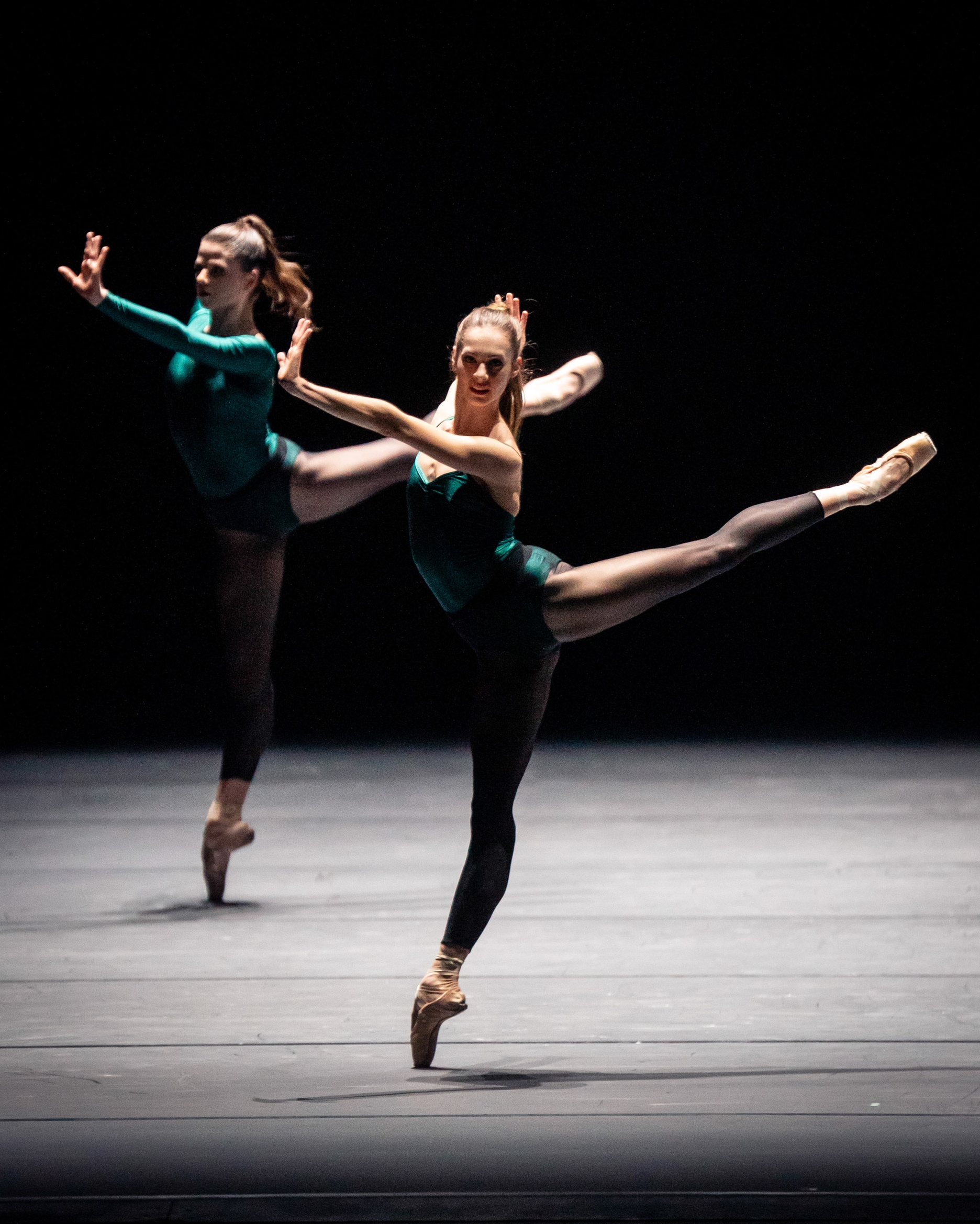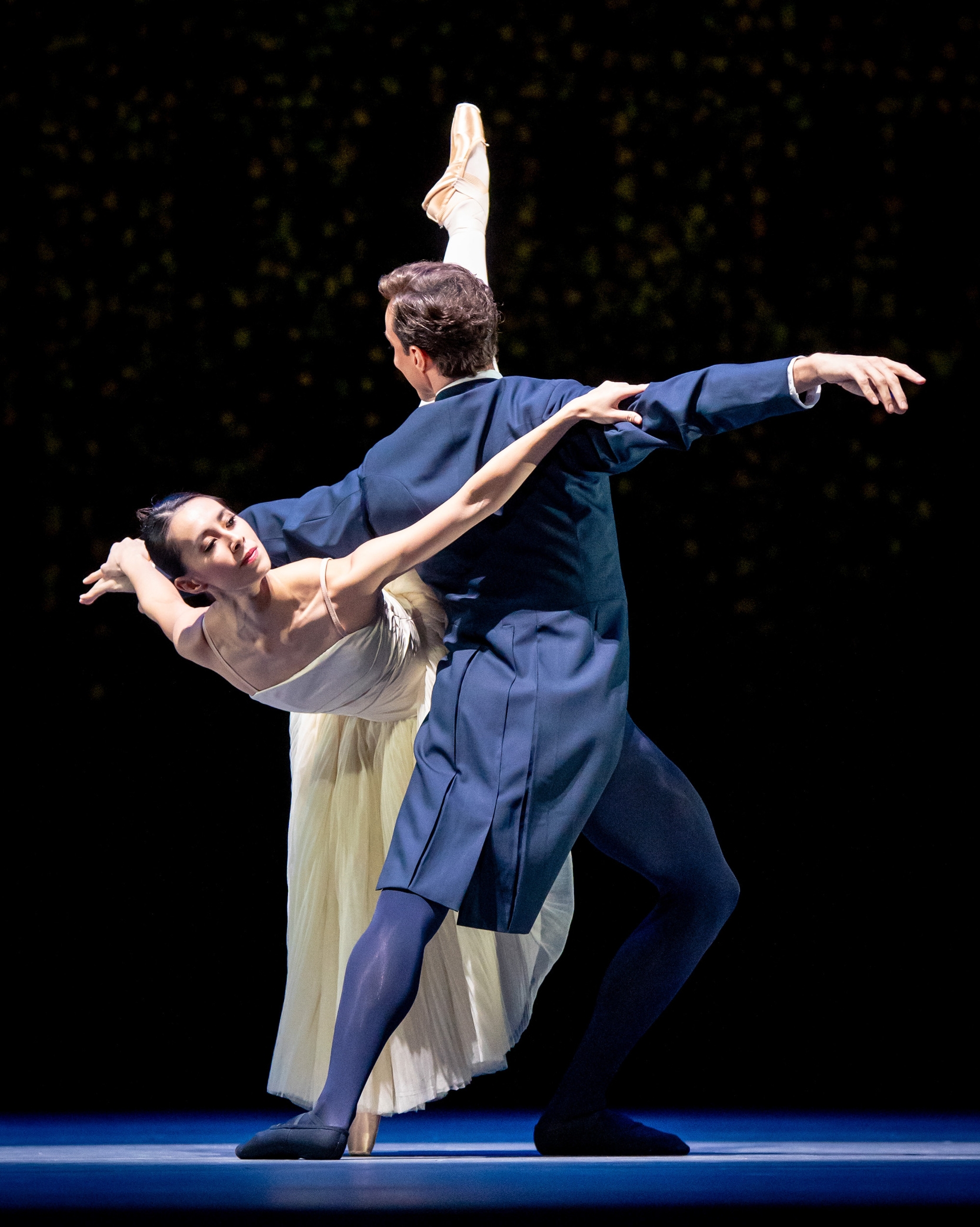Three Masterpieces of Modern Ballet
News |
Hans van Manen and William Forsythe revolutionised dance in the 20th century, each in his own way, by returning to the roots of ballet and taking it in new directions. The model for their bold and groundbreaking works was George Balanchine – the choreographer who grew up in the St. Petersburg tradition, moved to the Ballets Russes and finally to the USA, and not only shaped 20th century dance like no other, but also created his own image of the athletic dancer’s body and, with the New York City Ballet, a company that is still unique today. Shifting Symmetries brings together the three masters in one evening, offering three fascinating perspectives on 20th century ballet.
Concertante, premiered in January 1994, is one of the works that Hans van Manen created during his highly inspiring collaboration with the Nederlands Dans Theater Den Haag. The Dutchman describes his working method as “reducing further and further”, leaving “pure dance” in the end, thus creating works that are anything but abstract movement games. Rather, his steps, once coagulated into an essence through the combination of music and a highly differentiated muscular body feeling, are always understood as “vessels”, which are given their own timbre through the individuality and personality of the performers and thus constantly reappear before us. The atmosphere in Concertante is marked by a strange ambivalence, a tension that arises from the youthful, playful behaviour of the eight men and women and a constantly lurking aggressiveness with which they compete against each other or simply wipe away a gentle approach with a rude movement. Relationships open up with a brief glance, an outstretched hand. But as in a thriller, there is something dangerous in the air.
“Erotic, reduced, austere, romantic - first-class dancing: three ballets by neoclassical masters Hans van Manen, William Forsythe and George Balanchine cast a spell over the audience.”

In 1987, Rudolf Nureyev commissioned William Forsythe to create a new piece for the Ballet de l’Opéra de Paris. What was created to electronic sounds by Thom Willems remains one of the 20th century’s pioneering choreographies: In the Middle, Somewhat elevated. As if in a competition, the American choreographer pits his dancers against each other, encouraging them to fight against gravity in the hope of harvesting the “somewhat elevated” golden cherries in the stage sky that give the piece its name. “In the Middle, Somewhat Elevated is a theme with variations in the strictest sense”, explains Forsythe, “extending and accelerating the traditional figures of ballet. By shifting the alignment of positions and the emphasis of transitions, the enchainments begin to tilt obliquely and receive an unexpected drive that makes them appear at odds with their origins.”

In George Balanchine’s œuvre, the radical rethinking of classical danse d’école into a ballet art for the 20th century is one side, particularly evident in his Black & White ballets and culminating in a work such as Agon from 1957. But Balanchine also had another side, a softer, more lyrical, more romantic side, which he showed in his brilliant homages to classical ballet. These include the Brahms-Schoenberg Quartet, created in 1966 for the New York City Ballet, one of the great ensemble pieces with a cast of 55 dancers. To the four movements of the Piano Quartet in G Minor op. 25 by Johannes Brahms in Arnold Schönberg’s colourful orchestration, Balanchine presents independent miniature ballets in four pictures: An elegant variation on hierarchy and order in space; a Pas de deux interwoven with a female trio that breathtakingly depicts the intimacy between a man and a woman in an extremely fleeting atmosphere as a permanent oscillation between moments of tenderness and aggression, of determination and submission, of rejection and attraction; an enchanting ballet blanc in the spirit of La Sylphide; and an extremely virtuoso finale, enriched with folk dance elements, with which Balanchine really brings the stage action “to the boil”.
